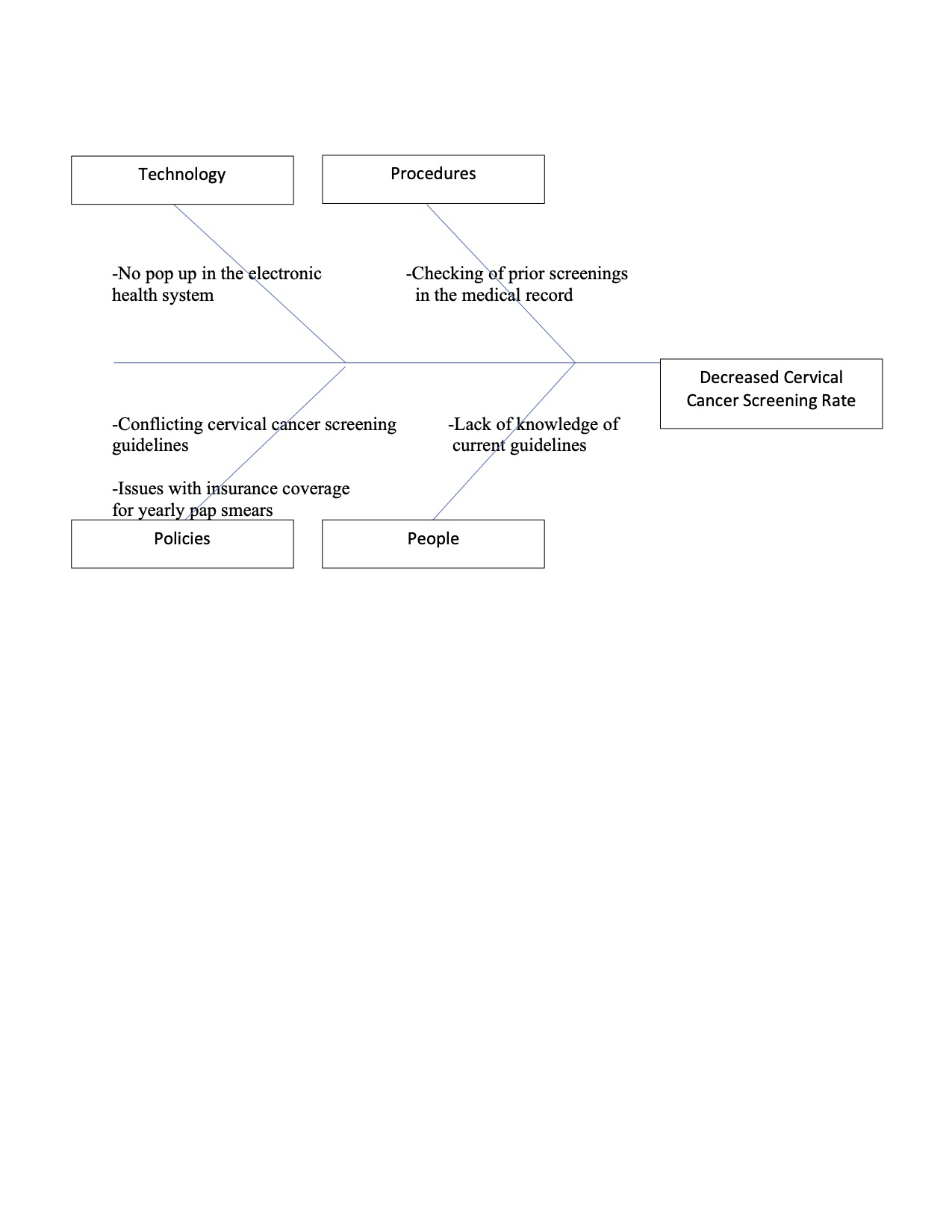Session Information
Date: Saturday, November 6, 2021
Title: Health Services Research Poster I: Lupus, Inflammatory Arthritis, & More (0128–0148)
Session Type: Poster Session A
Session Time: 8:30AM-10:30AM
Background/Purpose: Females with systemic lupus erythematosus have increased rates of cervical cancer especially if on immunosuppressive therapy. The American Cancer Society reports the incidence of cervical cancer in the general public to be 7.5/100,000. The incidence has been reported to be significantly higher in females with SLE. Prior studies suggested that women with SLE have lower rates of undergoing timely cervical cancer screenings compared to the general population. The American Cancer Society recommends screening women with SLE at age 21 or 1 year after sexual activity, whichever comes first, with annual pap testing for patients age < 30 and a yearly pap with HPV co-testing if >30. For the general population of women ages 21-65 pap testing every 3 years is recommended for patients < 30 and if >30 cytology is recommended every 3 years or cytology with HPV co-testing every 5 years. This study aimed to determine the rate of cervical cancer screening and incidence of cervical cancer in women with SLE at our single academic institution.
Methods: A retrospective chart review was conducted at a single tertiary center. Females were included who had the diagnosis of SLE by ICD9/10 codes, had three or more rheumatology visits, and two or more visits with family medicine, internal medicine or OBGYN between the years of 2004-2020. Eligible patients were between 21-65 years of age. The search also included the number of pap smear procedure codes per patient. The rate of cervical cancer screening was estimated for each patient by finding the time difference between the first office visit and last office visit divided by the number of pap smears. A search was also conducted to identify patients who had hysterectomy and only time prior to hysterectomy was included when determining the screening rate. A search was also conducted to identify the incidence of cervical cancer.
Results: 145 patients were identified. 21 patients were found to have had a hysterectomy at some point during the time period and only the time prior to hysterectomy was included. The average time between cervical cancer screenings was found to be 55 months or 4.5 years. Furthermore, increasing age directly correlated with a decrease in screening. The average time between cervical cancer screening for women ages 21-29 was 27 months, women ages 30-39 was 53 months, women ages 40-49 was 50 months, women ages 50-59 was 63 months and women ages >60 was 80 months. Additionally, 4 patients had developed cervical cancer resulting in an incidence of 2.7%. A root cause analysis was preformed to identify causes for decreased cervical cancer screenings.
Conclusion: This chart review identified inadequate cervical cancer screening in women with SLE at this tertiary center. The time between screenings decreased with increasing age. Further research is needed to determine an appropriate screening interval for these patients to avoid unnecessary invasive procedures and increased costs. Future steps are to collaborate with the OBGYN department to provide an interdisciplinary approach in determining appropriate screening intervals and an intervention to improve the overall cervical cancer screening rate in this patient population.
To cite this abstract in AMA style:
Rosen E, Krause M. Cervical Cancer Screening Rate in Women with Systemic Lupus Erythematosus [abstract]. Arthritis Rheumatol. 2021; 73 (suppl 9). https://acrabstracts.org/abstract/cervical-cancer-screening-rate-in-women-with-systemic-lupus-erythematosus/. Accessed .« Back to ACR Convergence 2021
ACR Meeting Abstracts - https://acrabstracts.org/abstract/cervical-cancer-screening-rate-in-women-with-systemic-lupus-erythematosus/

